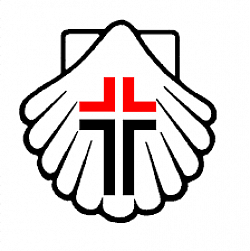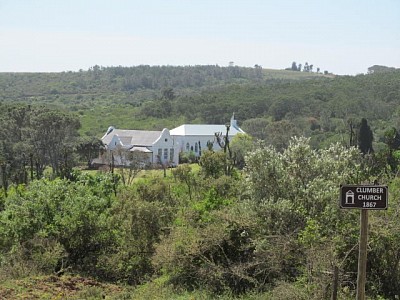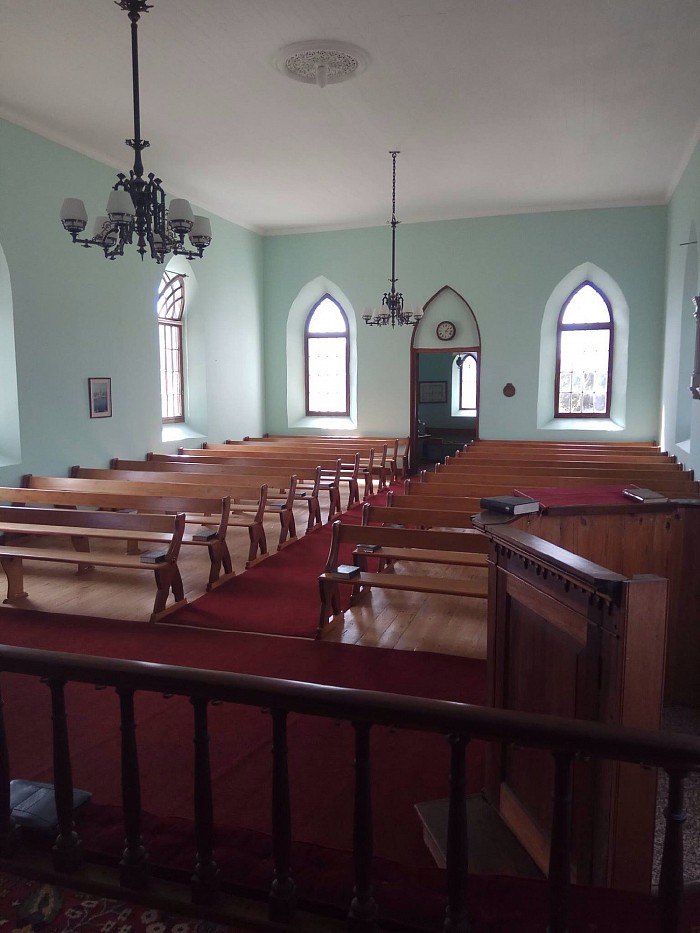CLUMBER CHURCH OF 1867
THE CLUMBER METHODIST CHURCH IS ONE OF THE FEW ACTIVE COUNTRY CHURCHES WHICH REMAIN
It forms part of the Bathurst and Port Alfred circuit of the Methodist Church in the Eastern Cape, South Africa
An Appeal for the Funding of the Total Renovation and Repairing of the Clumber School, a Heritage Building , Built in 1905.
SUPPORT NEEDED PLEASE
A FURTHER 4 PROJECTS ARE IN THE PIPELINE
SAVE THE SCHOOL
This website is a communication tool about the happenings at Clumber Church enabling the Clumber community to spread their news and events at Clumber far and wide. So many of the families from Clumber are now spread across the various continents as well as within South Africa. We consider it vital to retain those familial links and this site is one of those communication channels It is also a reference site for those interested in 1820 Settler history and especially for those families who were located at Clumber in 1820 . Many of those families still remain in the district and many generations have passed through the Church and School doors. As days go on , stories of the past fade from memory . So for those wanting to know more about yesteryear, the tales told here stand firm and available. As members of the Clumber community we can now be considered the custodians of the Clumber Church, the School and the grounds in which so many of our ancestors are buried. And I am sure that all will agree that these areas have to be maintained and kept to a good standard. In 2017 Clumber hosted their 150th anniversary and a spic and span renovated Church was the show piece. That huge renovation effort was made possible by the generous contributions which poured in from across the world. We stood in awe of the mighty hand of God so active in this task.
And now we have more tasks which need to be undertaken. And for these projects to be undertaken and completed we once again call upon your support for funds. Will you help us ?
1 Save the school . The school building now requires total renovation. In 2016 and 2017 whilst the Church was being restored, we repaired what we could with our available budget merely to prevent further decay. “Putting our finger in the dyke” as it were. The time has now come. We have to act to preserve the building.
The entire roof needs replacing . We have over the years patched holes in the roof but now it has reached a point where any attempt at patching is futile and expensive. Simply put it has rusted through. New purlins are needed, rotting wood and cracks and damp have to be attended to. In short a wholesale renovation. This project alone has a budget of R200 000
The school is unique in that it lends itself as a prospective hall to support weddings , as a reception venue. Should we press forward and market Clumber as a wedding venue , then we have to upgrade the facilities ; laying on water, installing ablutions , installing a kitchen , tables and chairs etc. But before we can begin these additional add on’s , our first priority is to make the building presentable.
As a wedding venue this would generate income for future expenditure. And who would not consider using Clumber to seal their wedding vows ; the most stunning country Church in RSA complimented by a fantastic setting.
2 The Church windows , not attended to in 2016 / 2017 , require oiling, sealing with new putty and then painting
3 The Church requires another coat of paint and sealing of the damp South wall. The quotation for numbers 2 and 3 is R 39 000
4 The grounds need attending to. Weeds have sprung up, the grass is long and the graves need cleaning. We have been so fortunate over the years having the Pike families undertaking that task. Unfortunately they have sold their farms and moved away. A garden services firm from Bathurst has been identified for this task , but obviously at a cost. An initial deep and thorough clean will cost R5500 . Thereafter R3500 for a monthly clean. This is a major relentless ongoing monthly task so maybe we could suggest that families of those interred in the graveyard make a monthly or annual donation to cover the upkeep of their family graves ?
From the Clumber community we thank you for reading through this request and we want you to know that this request for funds is a difficult one to put pen to paper , especially considering the support we have received in the past.
But we are determined and committed to keep the doors of this Church open and functioning so that the word of God can still be proclaimed in the valley; just as William Pike was determined to do in 1820. And , as proud custodians of our shared heritage we have a desire for the grounds and buildings to stand proud and as well kept as we can for future generations to use and enjoy.
Our banking and contact details can be found by tapping on the” Contact and Banking” tab on the left hand side of this page.
And now , after that earnest request for assistance for all who read this request for funds , please proceed on unpacking this website . Use the tabs on the left to guide you on which aspects you would like to delve into.
SITE OF CLUMBER CHURCH
The siting of the Clumber Church was central to the Nottingham Party of 1820, the area where this Party from Nottinghamshire, England, settled. They formed a part of some 3800 persons, known as the 1820 Settlers, the majority of whom settled in the area between what is now known as Port Elizabeth and the Great Fish River, the Eastern border of the Cape Colony; a region known as the Zuurveld.
The Clumber Church stands atop a knoll, named Mount Mercy by the Nottingham Party . They held a Service of Thanksgiving here on their arrival in 1820 after a journey of nearly 7 months to the Cape Colony. It is the third Church the 1820 Settlers and their descendants built at this spot, and was opened on 10 November 1867. Still in use today with a Service held on the fourth Sunday of the month at 11h00, the Clumber Church faces difficult times due to the depopulation of the countryside. Once a thriving social gathering place, it boasted a school, teachers' home, manse, a hall used for social occasions as well as Sunday School teaching, a cricket field, tennis courts and clubhouse. Now all that remains is the Church opened in 1867, and the school building; dating from 1905. Both the School and the Church were declared National Monuments on 23 November 1980.
A KNOLL IN THE CLUMBER VALLEY
Mount Mercy
Mount Mercy is a small hill situated in a valley between Bathurst and Grahamstown in the Eastern Cape. This knoll has been central to the Nottingham Party of 1820 Settlers and the subsequent Clumber Community as a place of gathering, schooling and worship. And it was here, at the foot of Mount Mercy, on July 25 1820, that the Nottingham Party offloaded their belongings from the wagons and carts that had transported them on their journey from Algoa Bay. The last leg of their long journey which had seen them leave Nottingham and board the vessel Albury in Liverpool in mid January 1820. Their final destination in a land which for them meant new beginnings.
The Clumber Church is situated on the crown of Mount Mercy, so called by the Nottingham Party of 1820 Settlers because of their safe arrival after a journey which started in Nottingham in England to their final destination here of just under 7 months. They held a Service of Thanksgiving on Mount Mercy on the day of their arrival on 25 July 1820. Services were then held under the trees at John Bradfield's home close by, as well as the home of William Pike in inclement weather until the first Clumber Church was built on Mount Mercy and opened on 28 September 1825.
When the entire Nottingham Party at Clumber had to abandon the area during the 6th Frontier War, the first Clumber Church, being abandoned, was entered and damaged by the invaders. So, it was decided that a second Church be built, also on Mount Mercy. This second Clumber Church was opened on 31 December 1837. After seeing through the 7th Frontier War, or War of the Axe, in 1846, as well as the 8th Frontier War of 1850, and being a source of refuge during these troubled times, the Church being in a poor state, it was decided to build a third Clumber Church, the current, also on Mount Mercy. This third Clumber Church was opened in 1867. So, whilst the Clumber Church celebrated its 150th year in 2017, the Word of God has been proclaimed here at Mount Mercy from 25 July 1820.
THE PRECEDING CLUMBER CHURCHES
The existing Clumber Church of 1867 was preceded by two Churches, all built on Mount Mercy.
The first was built in 1825, a mere 5 years after the arrival of the Nottingham Party, an astonishing achievement considering that this Party from Nottinghamshire were poverty stricken. This Church was entered, and damaged, by the invaders in the Sixth Frontier War when the entire area was evacuated.
The second was built in 1837 and endured depredations during 2 Frontier Wars. In the Eighth Frontier War the Church was used as a Command Station instead of evacuating the area as was the case in The Sixth Frontier War.
BOTH CLUMBER CHURCH AND CLUMBER SCHOOL ARE LISTED AS HISTORICAL BUILDINGS
The SAHRA Heritage Buildings on the Clumber Precinct
The Clumber Church and Clumber School on the Clumber Precinct were proclaimed National Monuments on 23 November 1980. The National Monument Council was superseded by The South African Heritage Resource Agency ( SAHRA ) which acknowledges this Complex as a Provincial Heritage site..SAHRA Site Identification 29463 SAHRA Identifier Number 9/2/009/0014
DIRECTIONS ON HOW TO GET TO CLUMBER CHURCH
The Clumber Church lies close to the R67 road which connects Port Alfred to Grahamstown. From Port Alfred travel to Bathurst, proceed through the village and 3km beyond Bathurst, turn right onto the Shaw Park road. Travel a further 2 km and turn left to Martindale Descend the hill into the Clumber valley and turn right at another Clumber Church directional sign.
Please note that the premises are unattended but you are more than welcome to walk around the Church and explore the graveyard in which a number of 1820 Settlers are buried.
THE STEEPLE IS DISMANTLED, REPAIRED AND FINALLY INSTALLED
This website also details the extensive repairs and renovations to the Clumber Church building which commenced in 2015 . It also details the minor superficial repairs to the Clumber School building ; a project which was undertaken simply to halt further obvious deterioration , not a complete restoration. Work on these projects started in 2015 .Whilst the Church's restoration was complete by the time of the 150th Celebrations in 2017, this was not the motivation behind the Church restoration. It was simply that the building had fallen into disrepair and the Clumber Community was determined to reverse the obvious decay.







